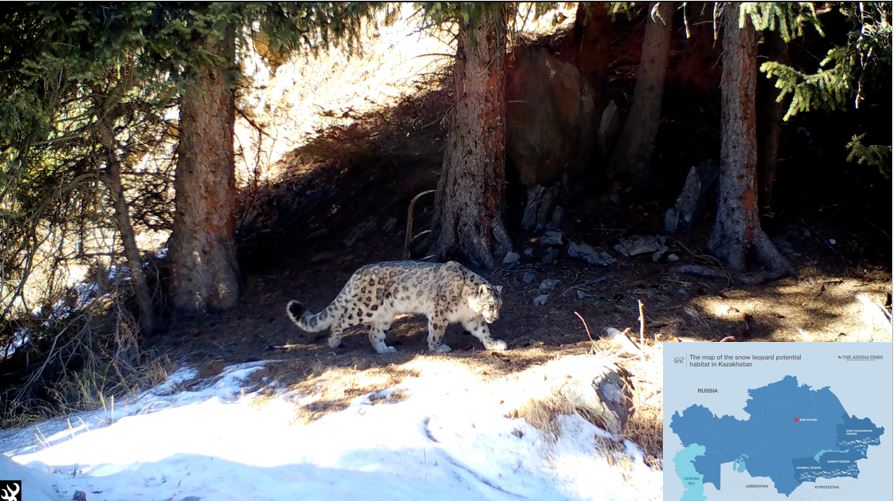NUR-SULTAN – Camera traps have recorded the comings and goings of snow leopards 65 times in the gorges of the Trans-Ili Alatau mountains around Almaty city this year, reports Russian World Wildlife Fund (WWF).

Kazakhstan celebrated an environmental holiday – International Day of Snow Leopard on Oct. 23. Photo credit: Institute of Zoology with Wildlife Without Borders.
Overall, 35 camera traps were installed in the outskirts of Almaty and the towns of the Almaty Region at the end of 2020.
The main stage of monitoring research was successfully completed as part of an effort aimed at the “conservation of the snow leopard species as a living symbol of Almaty metropolis and Kazakhstan” launched by Wildlife Without Borders Kazakhstan, a non-commercial private organization, and the Institute of Zoology of the Ministry of Education and Science.
Based on preliminary monitoring results, approximately 25 individual snow leopards were revealed to inhabit the project area. Almost all automatic cameras in the gorges captured female snow leopards with cubs, and two of whom had three cubs.
Also, five snow leopards live within the city limits, and one of them was caught on camera 16 kilometres away from the Monument to Kazakhstan’s Independence.
“Monitoring studies have shown the snow leopard population’s status around Almaty is still stable. However, due to a marked increase of human presence in the mountains, snow leopards come less frequently to some areas where they used to be regularly caught by cameras,” noted Alexey Grachev, Snow Leopard Monitoring Center’s director. “Perhaps, a factor of concern is one of the main negative factors, which affects snow leopard’s way of life.”
According to the Russian WWF, the possibility of permanent snow leopard habitation in the mountainous areas of Almaty is very high as it is a suitable landscape for the endangered predator despite being near the metropolis. However, the expansion of urban infrastructure development in the southern (mountainous) route and the high rate of population growth have had a negative impact on animals, who will consequently be forced to migrate to less favourable areas.
Unfortunately, there is a negative population growth rate from year to year, which means that the snow leopard is likely to disappear completely from its original habitat.
As Grachev said, the work carried out under the project has enabled scientists to provide recommendations for better protection of the snow leopard’s habitat as things stand.
The snow leopard, which is considered to be an endangered species in the country, is listed in the Red Book of Kazakhstan. According to the Ministry of Ecology, Geology and Natural Resources, there are approximately 130 snow leopards in Kazakhstan.

